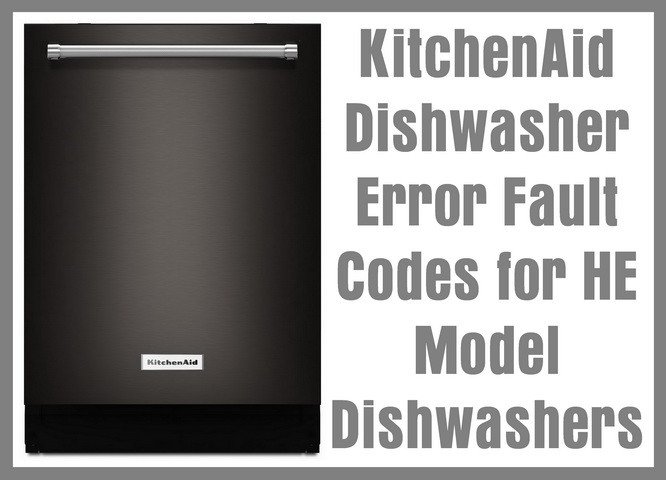
The F1 error code on KitchenAid dishwashers generally indicates a problem with the water intake. Think of it like a garden hose that’s got a kink in it – the water isn’t flowing freely, which can halt your dishwasher’s operations. But before you start panicking, know that this is a common issue that can often be resolved on your own with a little patience and elbow grease. In the following sections, we’ll break down exactly what this error code means, how you can troubleshoot it, and steps to prevent it from happening in the future.
Understanding Error Code F1
So, what’s the real scoop on this F1 error? In simple terms, this code pops up when there’s an issue with the water supply. Your dishwasher is designed to sense when something’s amiss with the water flow. This could be due to a blocked filter, a kinked hose, or even a faulty inlet valve. Imagine trying to drink from a straw with a piece of candy stuck in it – frustrating, right? That’s essentially what your dishwasher is experiencing.
This error is a protective measure, designed to prevent further damage to your appliance. Without water, your dishwasher can’t operate correctly, and trying to run it without resolving the issue can lead to overheating or even more severe damage. It’s like trying to run a marathon with a sprained ankle; you’re just going to cause more harm. Recognizing this signal as a friendly heads-up can save you from more complex problems down the road.
If you’re dealing with an F1 error, the first step is to remain calm. While it might seem like a daunting task, remember that these machines are built with user-friendliness in mind. Manufacturers know that most people aren’t appliance technicians, so many solutions are designed to be straightforward. By understanding the underlying cause of this error code, you’re already halfway to solving it.
Common Causes of the F1 Error
You might be wondering, “What exactly causes my dishwasher to throw up this F1 error?” There are a few usual suspects. The first and most common is a blocked water filter. Just like an AC filter that gets clogged with dust, your dishwasher’s filter can get blocked by food particles and debris, restricting the water flow. Regularly cleaning this filter can often do the trick.
Another potential cause is a kinked water inlet hose. Picture a garden hose bent in the middle, stopping water from passing through. Your dishwasher’s water supply can get similarly obstructed if the hose isn’t properly aligned or is damaged. Running your dishwasher with this issue is akin to trying to fill a bucket with a trickling tap – it’s just not going to end well.
A faulty water inlet valve is another possibility. This valve is responsible for letting the right amount of water into the dishwasher. If it’s malfunctioning, it could mean too little or no water is entering your appliance. Identifying this issue might be a tad more challenging, as it can involve electrical components. However, knowing this is a possibility can guide you in determining whether professional help might be necessary.
Troubleshooting the Error
Now that you have an idea of what might be causing this F1 hiccup, let’s talk solutions. The first and simplest step is to clean the dishwasher filter. Locate it at the bottom of your appliance – it usually looks like a small, removable grate. Gently remove it and wash away any grime that’s built up. Think of it like cleaning out a hairbrush; removing the debris can work wonders for functionality.
Next, check the water inlet hose. This is typically located at the back of the dishwasher. Ensure it’s not twisted or kinked. If it is, straighten it out and give it another go. Sometimes, a little adjustment is all it takes. It’s similar to untwisting a necklace that got tangled in your jewelry box – once it’s straight, it’s good to go.
If these steps don’t resolve the issue, it might be time to inspect the water inlet valve. This can be a bit more technical, and if you’re not comfortable with appliance repair, it might be worth calling in a professional. However, if you’re up for the challenge, ensure the dishwasher is unplugged, and carefully check for any obvious signs of wear or damage. Replacing this part might require some specific tools and know-how.
Prevention Tips
Once you’ve tackled the F1 error code, it’s time to think about prevention. Regular maintenance can help keep your dishwasher running smoothly. Start by making a habit of cleaning the filter monthly. It’s a simple step, much like wiping down counters, that can make a huge difference in performance.
Always ensure the water inlet hose remains unrestricted. During installations or kitchen clean-ups, give it a quick check to make sure it hasn’t gotten twisted. It’s a little like making sure your phone charger isn’t getting wrapped around the table leg – small adjustments can prevent big problems.
Lastly, keep an eye on the age and condition of your dishwasher’s parts, especially the water inlet valve. If you notice any leaking or performance issues beyond the usual, it might be worth having a professional take a look. Much like taking your car for a regular oil change, preventative care can save you from more significant hassles later.
By understanding and addressing these common issues, you can ensure your KitchenAid dishwasher remains a reliable kitchen companion. With a bit of regular maintenance, you can prevent pesky error codes and enjoy your appliance’s convenience for years to come.